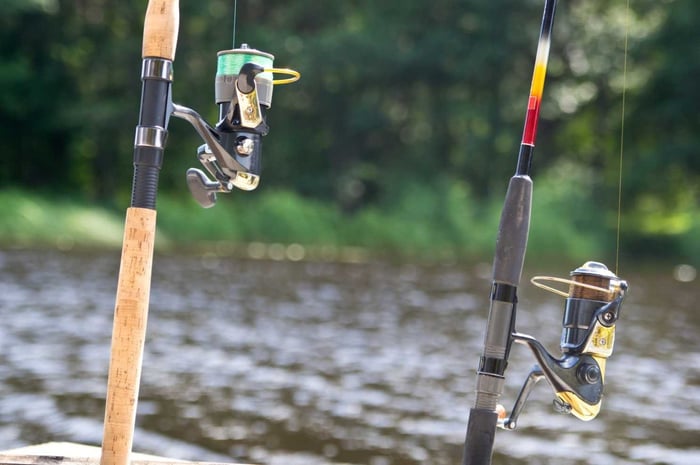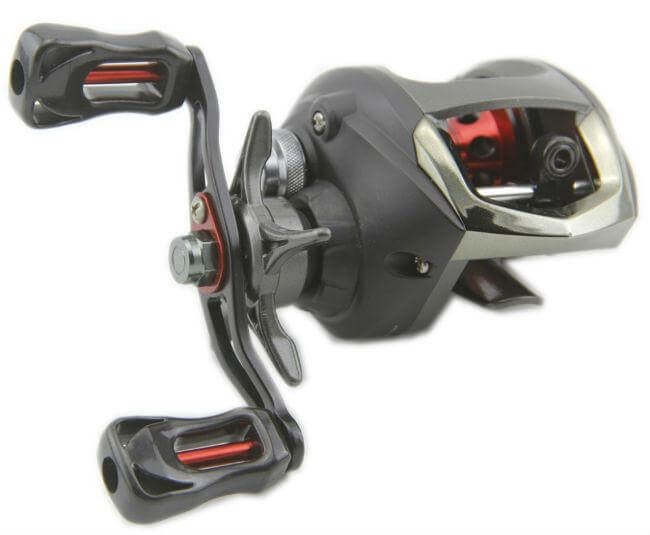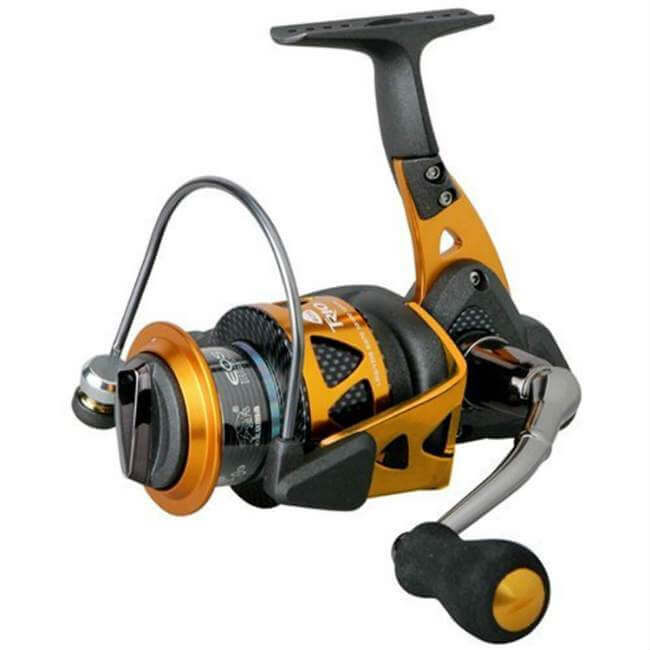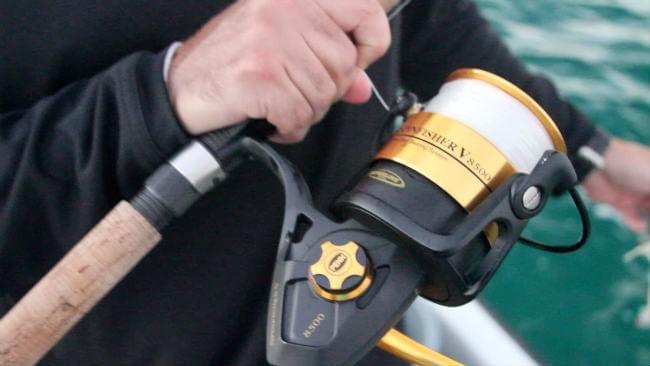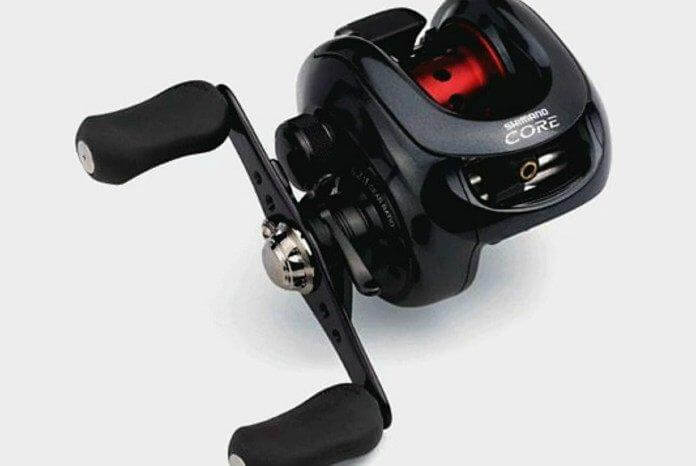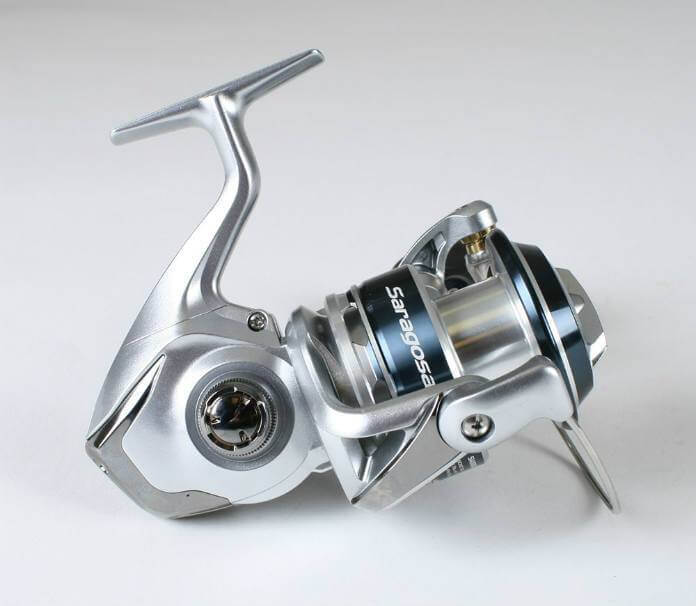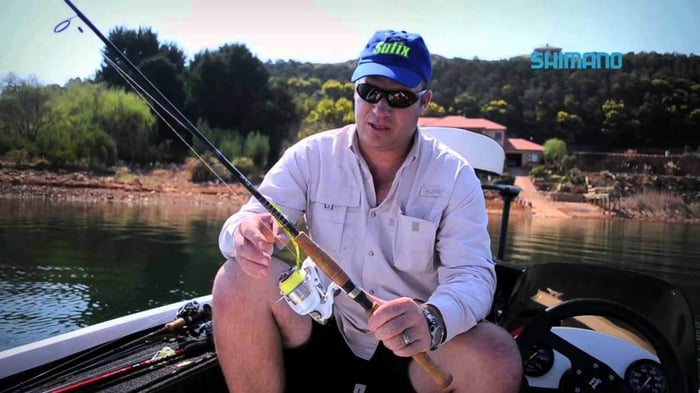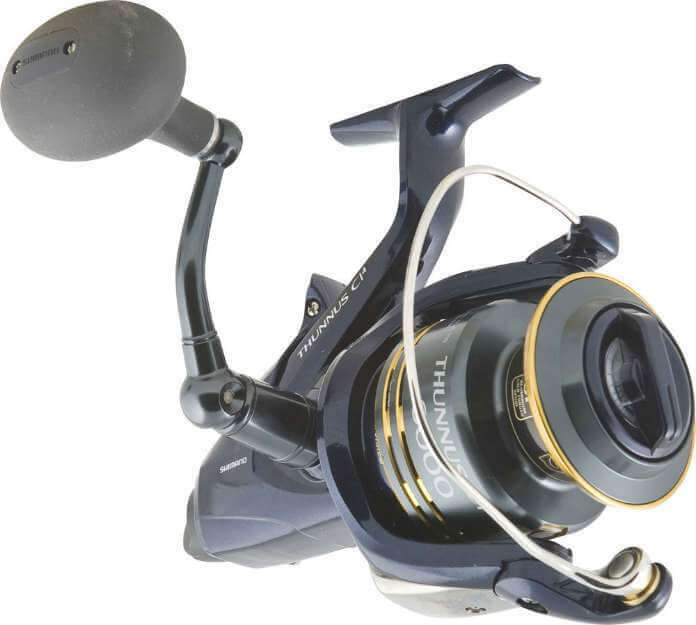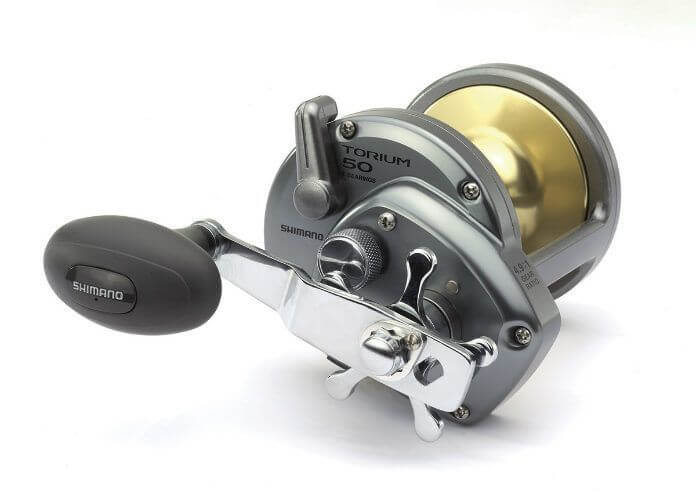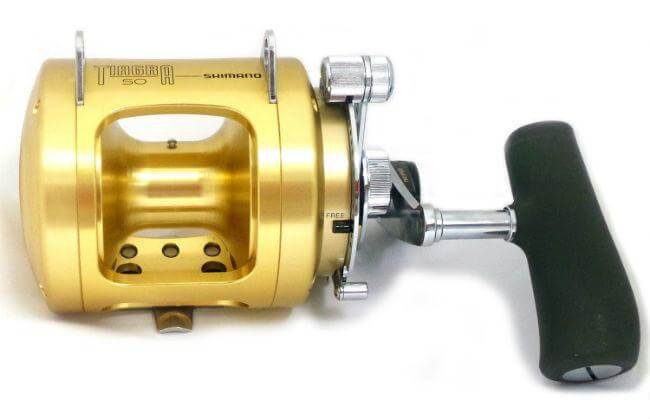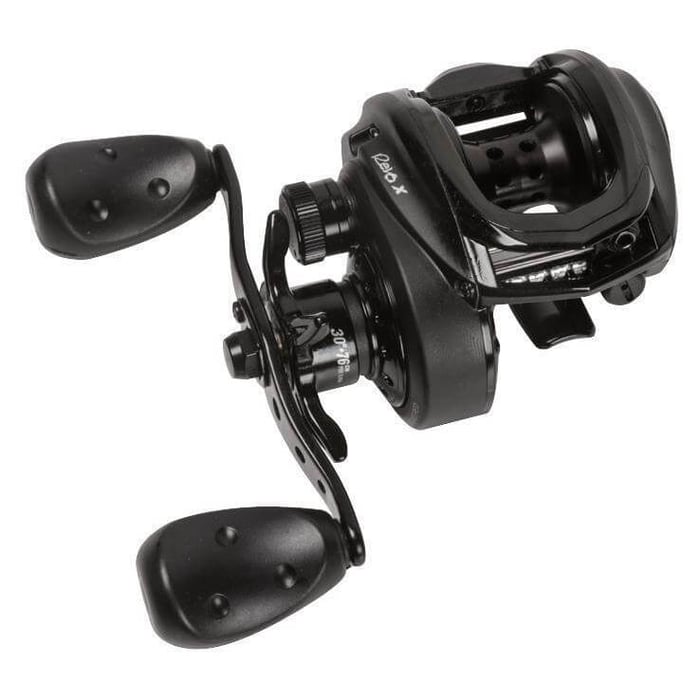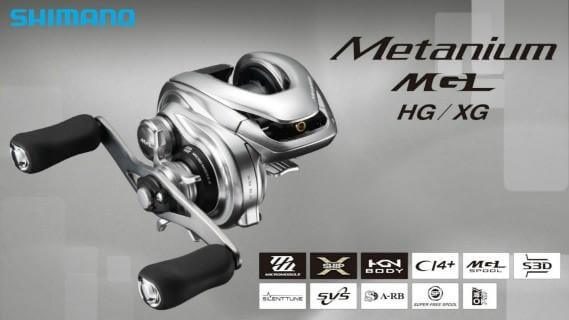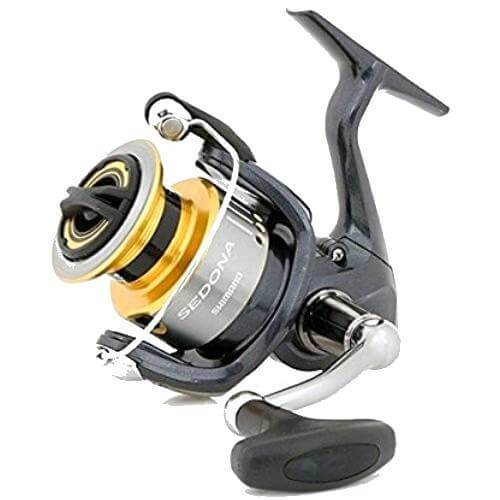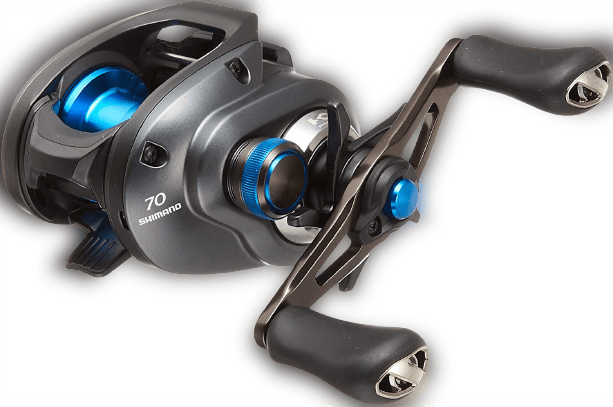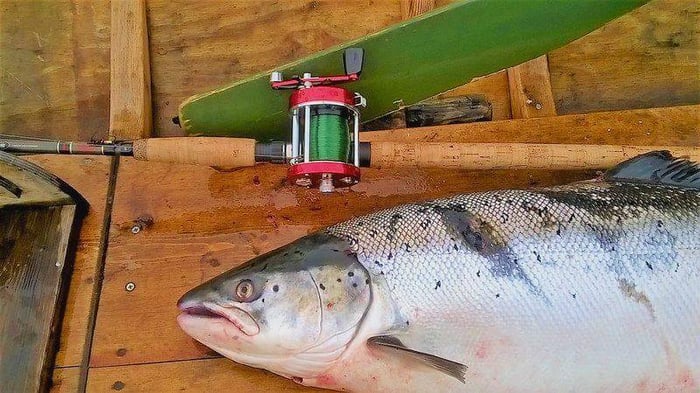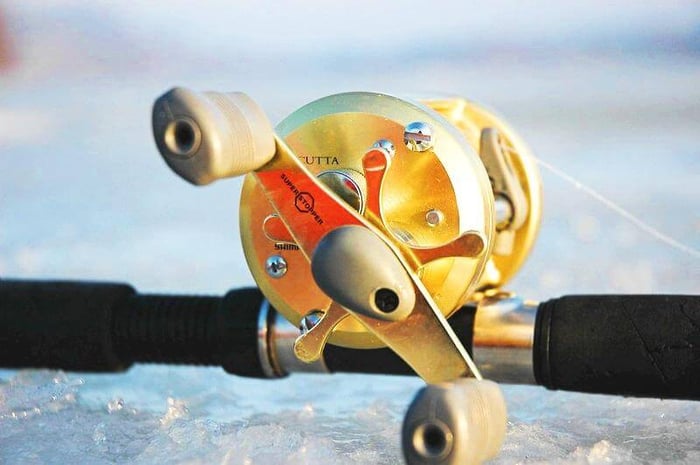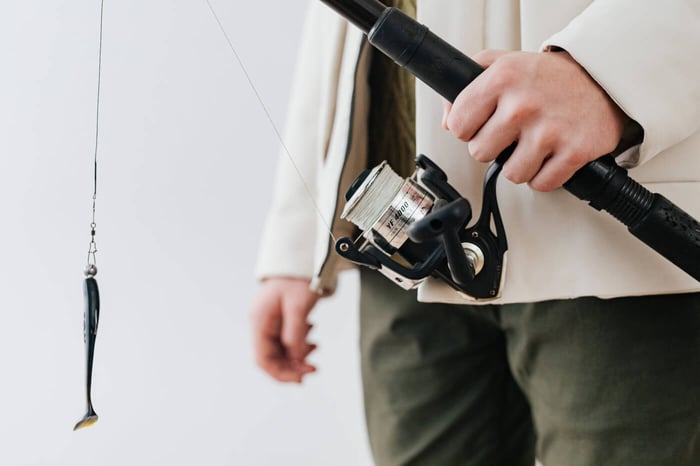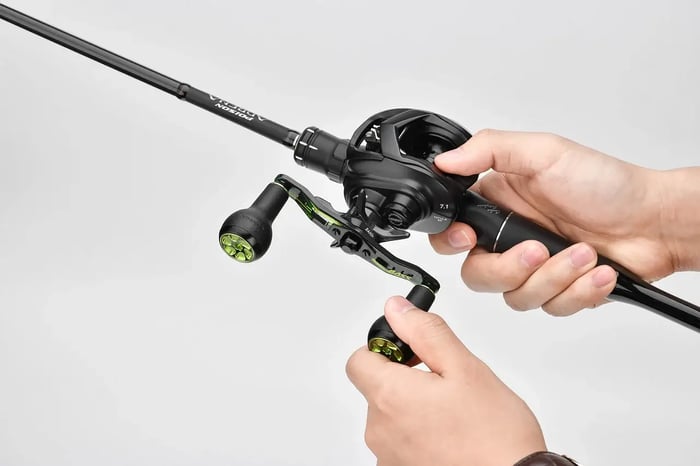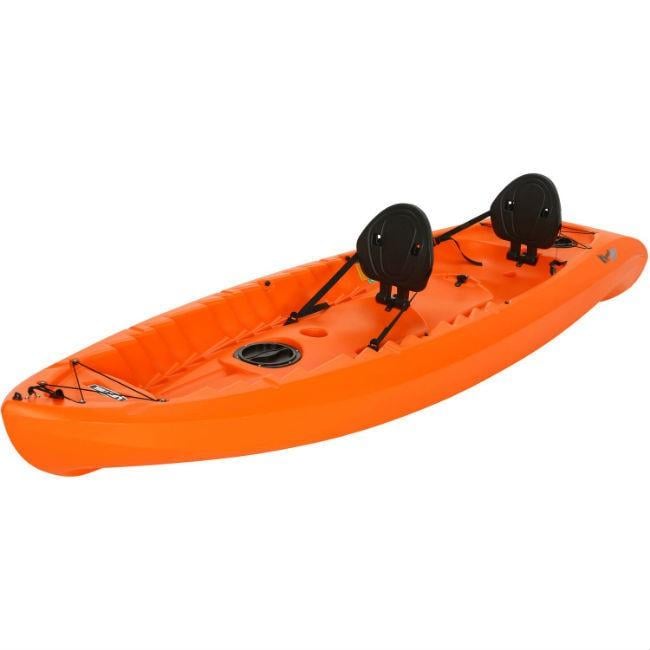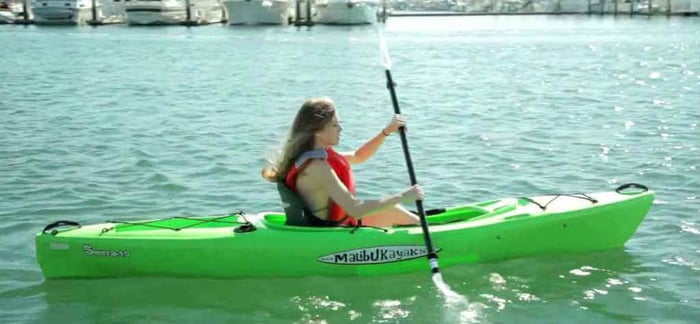Fishing reels are cylindrical devices attached to a fishing rod utilized for stowing lines and winding.
Traditionally, fishing reels are used in angling and casting recreational sport. Users typically attach the reels to the fishing rod. However, specialized reels are now mounted directly on the boat transoms or gunwales. Indeed, modern reels have fittings that aid in retrieving the line and casting for accuracy and distance.
This article will discuss the different types of Fishing Reels, the pros and cons of each class, and the recommended product to use.
Click Here For the Current Sales of Fishing Reels
Contents
- 1 History of the Fishing Reels
- 2 Bait Casting Reels
- 3 Electric Fishing Reels
- 4 Lever Drag Fishing Reels
- 5 Saltwater Spinning Reel
- 6 Spincast Fishing Reels
- 7 Spinning Reel
- 8 Star Drag Reels
- 9 Trolling Fishing Reels
- 10 Reel’s Parts
- 11 Tips in Choosing the Fishing Reel
- 12 Knowing the Drag Systems
- 13 Bearings: Its Importance for the Reel
- 14 Conclusion
History of the Fishing Reels
Fishing reels have come a long way, and research suggests that they started as early as 1195 A.D., as seen in a Chinese painting. During that time, the reels were attached to twine in a bamboo pole. Their appearance is similar to the ‘fly reel’ today, and they feature a manual or hand-wound movement when moving.
Back then, fishing was a way to provide food for the family. With the help of the reel, catching a fish becomes easier.
Studies show that fishing reels were used in the Western region in 1651. In the 1820s, George Snyder of Kentucky, USA, manufactured the commercial version of fishing reels. Snyder’s designs are the basis of the majority of fishing reels nowadays.
Nowadays, recreational fishing has become a hit since it allows people to relax, bond with their loved ones, be free from chaotic city life, and be one with nature.
Meanwhile, the fishing reels are created to enable the usage of lures that are too light to cast using the baitcasting reels. Lighter lures can be cast since pulling the line using the rotating spool is unnecessary.
There is no backlash through the fishing reel, although the line can sometimes be trapped under the spool.
The line can be detached in loose loops. Over the years, several level-wind mechanisms have been created to try to solve the issue. However, most fishermen manually reposition the bail after casting to minimize the line twist.
Types of Fishing
A. Bait Casting Reels

Using a baitcasting reel requires patience, experience, and skill. Thus, it is commonly used by the most experienced anglers and fishers.
The baitcasting reel provides better control and accuracy. With this type of reel, the spool rotates as you cast. It allows the user to feather the spool for the precise placement of lures. Furthermore, it has small dimensions with no bail arm or handles, making it manageable.
With the baitcasting reel, you can simply slow the spool more, and it can drop to the exact distance you want. Regardless of how far your initial cast is, this is how amazing the baitcasting reel is.
Another benefit of this reel is flicking lures; these reels have more control, better balance, and better one-hand operation.
When using it for live baiting, you can have more confidence in power and control. This reel type is strong and can handle heavy and more oversized prey like giant catfish and freshwater fish such as the alligator gar.
The only problem with this fishing reel is that users can experience many backlashes. Many part-time anglers do not have the patience that most expert fishers have. So, make sure you have more patience in practicing before buying a baitcasting reel.
For more information about the best Best Bait Casting Reels in the market, check these articles:
- All About the Shimano Metanium
- Shimano Torium 50 Conventional Baitcasting Reel Review
- Shimano Core 50MG7 Low Profile BaitCasting Reel Review
B. Electric Fishing Reels
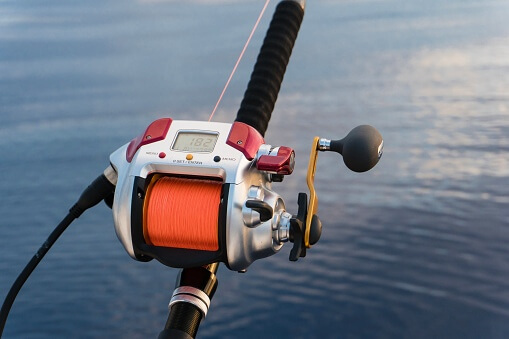
Features of Electric Fishing Reels
They say electric fishing reels are the bomb for the deep, and these reels are changing the way anglers fish. As for most anglers, it makes deep fishing much more fun!
Electric reels are electric-assist fishing reels. This type of fishing reel has two mode settings: one selects a speed mode, and the other is the power factor, which you can adjust and alter to maintain speed and load.
Most fishers decide to switch to electric reels because they find winding in frustrating if the baits get picked off. This could result in losing time between drops while trying to stay over a narrow structure.
So, electric fishing reels are the best reel for you if you plan on catching large aquatic fishes that roam and live in deep waters,and tuna like swordfish .
The advantage of an electric reel is that it has an electric motor to help you retrieve the rig or jig back and not to winch big fish up. What is also impressive about this type of fishing reel is that it can change automatically when you catch a big fish.
However, problems also happen with this type of reel. Sometimes, the reel changes down a gear when pulling in your sinker and big baits, but you can usually solve this by hitting the button, and it will just switch back into high gear.
When buying this type of fishing, handling and caring for the electric reel requires much effort. You have to keep it reel and clean and dry as possible.
Also, electric reels are all “Power-Assisted” reels, which means they operate with batteries. You must have a suitable voltage supply wherever you use them.
Moreover, direct spraying while traveling can damage your reel. Always clean it with an excellent water-repelling lubricant or protectant. Lastly, be mindful of the speed and your load, especially when the spool is nearing total capacity.
C. Lever Drag Fishing Reels

Features of Lever Drag Fishing Reels
All types of fishing reels have a drag system. You may think of it as a clutch or a line braking system.
Using a drag lets the line unwind in a controlled manner off the reel when a fish fights and pulls so hard that the line is in danger of breaking.
A lever drag allows more precise drag manipulation when fighting a large fish. Also, lever drags have a lot more drag surface, which can be seen in this reel's smoothness, durability, and power of drag.
This is an advantage as it gives better control over drag settings. This is why all high-end big game reels now have level drag, not star drag.
A remarkable feature of lever drags is its strike setting, like a total drag setting. Using this, you can vary the drag and adjust to your needs. Then, you can return to a previous setting and know the drag value. And what’s more, once you set it for the pound test, you need not adjust it again. This can be done quickly and accurately with the lever drag reel.
Meanwhile, the disadvantage of lever drags is that they only take the pressure off the drag while the gear train is still turning with the spool.
The lever drag reel also spins the drag disc along with the spool. This increases the mass of the spool and inhibits casting efficiency. Furthermore, this means that you have to move the lever farther.
If you are not very confident in casting but want to get more distance with no backlash and control fish in heavy ocean currents, this type of fishing reel is definitely for you.
D. Saltwater Spinning Reel
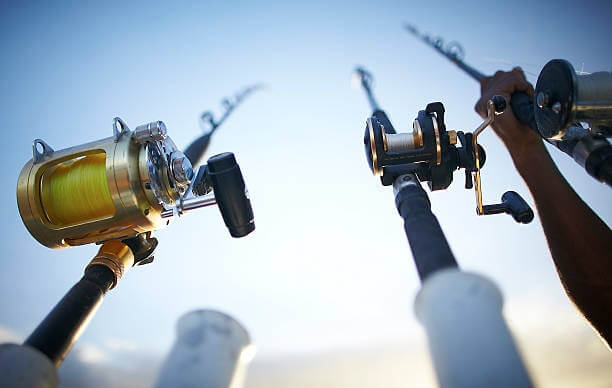
Saltwater spinning reels can be classified as either high-speed or low-speed. High-speed saltwater spinning reels have a gear ratio greater than 6:1. This is good for retrieving baits at breakneck speed. At the same time, Low-speed reels use a gear ratio of less than 4:1, which offers more power for fighting big fish.
Spinning reels may have almost the same landing power as the saltwater spinning reel. Still, the difference is the internal gearing of the saltwater spinning reels, which is often most definitely made of special alloys.
These alloys are corrosion resistant, making this type of reel ideal for harsh conditions like fishing in saltwater.
This type of reel is designed to handle the saltwater environment. It is made with a drag knob supported with a stainless steel shaft to avoid damage by the saltwater.
It also has a balanced rotor that reduces the fatigue the fishermen experience, preventing the reel from wobbling. Thus, the saltwater spinning reel will make you struggle less and exert less energy.
Check out other articles and product reviews for Saltwater Spinning Reels here:
- Best Saltwater Spinning Reels Reviews for the Money
- Daiwa Saltist Saltwater Spinning Reels Review: Get Ready for the Big One
E. Spincast Fishing Reels
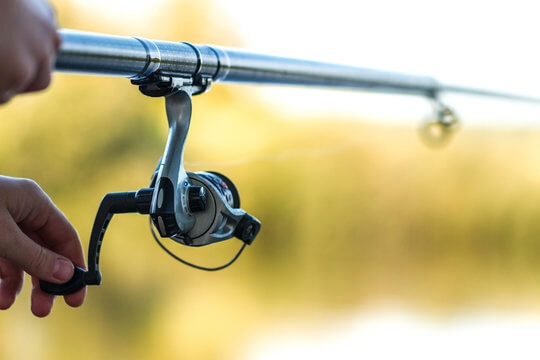
The spincast fishing reels’ design is modeled after the spinning reels. Generally, they contain the same essential parts. However, a compact nose cone encases the mechanism.
The amount of released line during casting and its weight depends upon how far the lure travels. You cannot over-spin the spool because of its fixed position on the reel. The line will stop feeding once the bait hits the water. To retrieve the line, you just have to push a button. Meanwhile, to maintain the tension, turn the crank handle and pin inside the reel or pop up accordingly so you can control the line feed.
Spincast reels are smaller than other reels and have a lower line capacity. Moreover, the lines of spin-cast reels could be more sturdy. Thus, these are not recommended for catching hefty fish. Despite this, spin-cast reels are still good for children and first-timers!
Spincast reels are more affordable than spinning and baitcasting reels. They can eliminate fatigue, backlash, and tangled lines.
Unlike baitcasting reels, the learning curve of the spin-cast reels is almost nonexistent. It is easy to use, lightweight, and a great tool for beginning anglers. This is indeed an ideal product for practice fishing. If you wish, a spin cast reel will best catch a small fish in one spot. This product can be used by children and adults learning to fish.
F. Spinning Reel
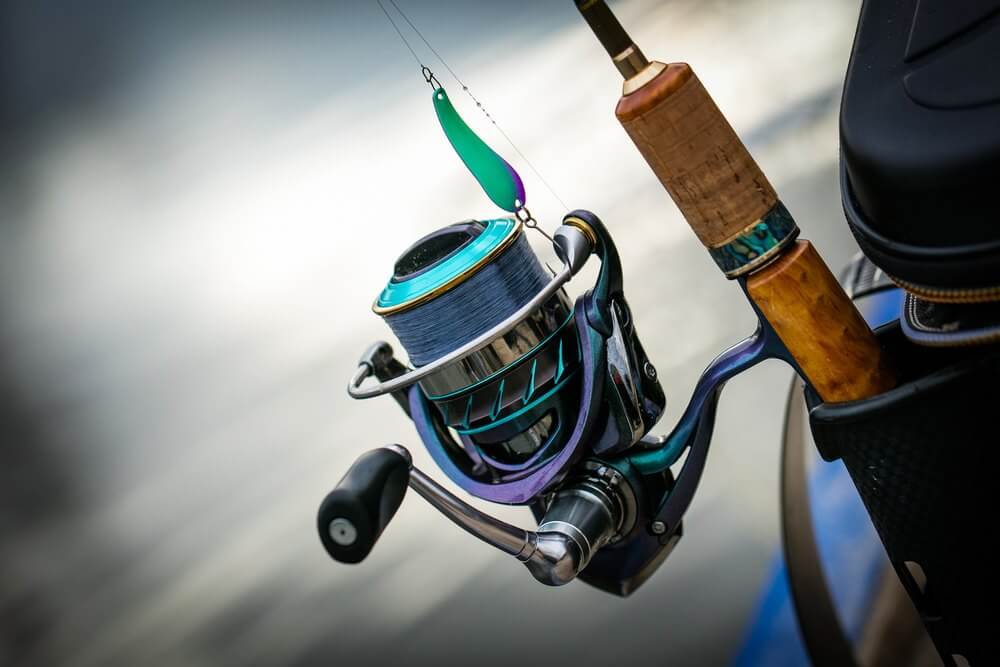
You might probably hear about spinning reels as “sissy sticks” and “fairy wands.” Most newbies and entry-level fishermen use this type of reel. The younger generation of fishers and anglers are brought up to fishing, starting with spinning reels. Indeed, many still prefer buying spinning reels to baitcasting reels.
It is the most common fishing reel, and the experience of these anglers using this reel is simply satisfying.
This fishing reel has a fixed spool underneath the rod, and its line is drawn out by the lure or bait and tackle weight.
Anglers use a spinning reel because it is versatile. It can be used to cast different tackle designs, artificial lures, and even live baits.
The lure sinks faster and prevents the ‘pendulum effect.’ In addition, spinning reels can be used in saltwater, and they can keep resistance against a big fish on a light line.
Moreover, spinning reels are a big help for bait and light tackle, and you pull the weight of the fishing line. Unlike other reels, the spinning reels do not get any tangles. If there are wind issues, you can still use the spinning reel.
If you are just starting your fishing journey, the spinning reel is the best reel since it is easier to use than other reels. You can throw the lighter lures faster, and this is indeed amazing.
Right-handed or left-handed users can also use the spinning reel. Reels with interchangeable handles that custom fit users' needs are available in the market.
Lastly, the drag can be easily adjusted amidst the fight with any size of fish through a spinning reel. Whether the drag is on the rear or front of the reel, the drags of the spinning reel are easily accessible. Thus, this can give you a full range of adjustments, especially in battles.
The only setback to a spinning reel is that when you cast to a target, instead of the lure dropping straight down, the lure will swing away from the target in a pendulum motion. The solution is to close the bail once the lure settles down to where your target is.
Another problem with the spinning reel is that it can wear under harsh conditions. However, regarding accuracy, the spinning reel can place a lure of any size and weight into a certain target from at least twenty yards away. On the other hand, it sends a lure quite far away and rarely gets a backlash.
Remember that the spinning reel cannot be used for a heavy or larger catch. It cannot handle line weights above ten pounds. If you are fishing heavy cover or areas with rocks, use a heavier line or a baitcasting reel instead.
Check this article for more information and products about the Spinning Reel:
G. Star Drag Reels

Star drag reels always work well when fishing from the rocks or sand. This type of reel provides precision and control over the drag, which is why other avid fishers prefer using star drag reels.
Star drag reels have a slight edge on casting ability. This type of fishing reel has a disc that is separate from the spool and does not rotate during casting, which minimizes rotational mass, increasing casting efficiency.
Most star drag reels disconnect the gear train when put in a free spool. Thus, it will cast farther or drop faster.
With the star drag, you can set the strike settings. But once you change it, knowing the previous strike setting becomes difficult. Since there are no reference points on a star drag and you need to add some drag pressure while fighting a fish, you won’t know how much more drag you give the reel.
For example, the star drag fishing reels are more affordable than the drag reels. Second, it is impossible to move a star drag by mistake; thus, it offers a steady position when used. Third, a star drag is so simple that you could just forget and leave it.
This is also a good reel for starters and inexperienced anglers.
Cons of Using the Star Drag Fishing Reels
Unlike the lever drag fishing reels, the star drag fishing reels can have a problem shifting from five pounds of pressure to 15 pounds of force within seconds. The star drag cannot smoothly and slowly shift straight through the free-spool and into the strike.
H. Trolling Fishing Reels
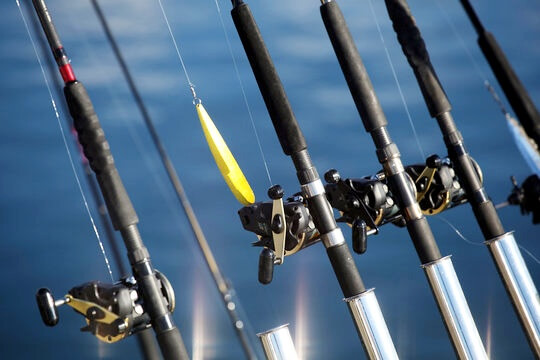
The last type of fishing reel is the Trolling Reel. Trolling is an angling where lines with hook-rigged lures are dragged behind a boat to entice fish to bite.
Trolling reels have three essential features that cannot be found: a line braking system, an on-and-off release lever, and a line-out alarm. This type of fishing reel offers the most versatility when it comes to fishing line options. It is most useful when multiple lures are covered in some reels.
A trolling reel is designed to be heavy-duty. It takes a lot of effort and drag, around twenty-five pounds and higher. This type of fishing reel also has lugs to strap into a harness. They are built to resolve line capacity, frame strength, and sometimes effective gearing.
There is very little concern about free spool priority. Most trolling reels have heavy, solid spools. These heavy solid spools have more kinetic energy than lighter spools. This will only mean it will be difficult to control since it will take more force to get the spool spinning and more “opposing force” to slow or stop the spool.
Benefits of a Trolling Fishing Reel
A Trolling fishing reel will allow you to quickly fish at various depths and in a larger area. This will enable you to find the strike zone for large freshwater fish and bigger game fish.
Cons of Using a Trolling Fishing Reel
Trolling fishing reels, like baitcasting reels, are recommended for more experienced anglers with an increased point.
Reel’s Parts
The reel’s parts vary depending on its type. But generally, each reel will have the following inclusions on it:
- Line Pickup-This will rewind the line to the spool
- Drag System- This will let the line slide back off the reel. The pressure from the fish keeps the line from breaking.
- A way to unfasten the line pickup for letting the line back off the spool and casting.
- Spool–This will hold the line. It will provide a handle to reel the line back into the spool.
As you advance into the baitcasting reels, you must have braking systems. With this, you can control the speed of the spool as it spins at the cast’s end. Also, you can make tension knobs to control the speed as you start the cast. You can create the line guides to wind the line evenly on the spool. Finally, you can have more features that will aid you in improving the functions of the reel.
Tips for Choosing the Fishing Reel
- Choosing the reel style: You can have a free spool, fixed spool, closed face, or center pin.
- Know the Drag systems if it's either front or rear drag
- Determine the bearings: The reel’s bearings inside will determine the reel's smoothness.
- Know the line lay. If the line lays flat on the spool, the reel will perform better as you cast it.
- A line clip will help you ensure that you will consistently catch more fish even if you cast feeders on the same spot.
- Always see the retrieve ratio to know how fast the reel will retrieve the line.
- Choosing the reel handle will depend upon your taste.
Knowing the Drag Systems
All fixed spool reels feature a drag system. Some are located on the front of the reel, known as the front drag reel, while others are adjustable on the rear, known as the rear drag reels.
The most common among pleasure anglers are the rear drag reels. Meanwhile, for match anglers, the front drag reels are popular.
These two types of drag have the same function. They are used to loosen or tighten the spool’s movement. When the drag is set as loose, the spool can rotate easily. With this, the fish will pull the line from the reel smoothly. Whereas if the drag is set tightly, the spool will now lock. Then, the line will snap before the spool can provide any line.
Tighten a drag system so the spool will let out a line before it snaps. As such, the fish caught will fight hard and eventually become tired. After that, you can get it without any problems. With this technique, you will control the fish and ensure it will not gain sanctuary in the snags.
The question now is: which is the best drag system to choose? The front drag system has the edge versus the rear drag system in terms of performance. Since the front drag is located directly at the spool’s end, the drag’s mechanics do not have to run through the entire length of the reel’s body. This is why most of the top-of-the-range match reels choose the front drag.
Bearings: Its Importance for the Reel
The number of bearings inside the reel will let you know how smooth the reel will be. Also, the bearings will help prolong the lifespan of the reel. This is because the bearings absorb most of the wear and tear of the reel’s moving parts.
Line Lay
As you cast the reel, it will perform better if the line lay is positioned flat on the spool. Also, you can cast further and effortlessly with it. Furthermore, this technique will allow you to cast with more accuracy.
If the line lay is flat, it will help ensure the line will consistently peel off the spool. There will be less resistance with an untidy and uneven line lay with this.
Line clips
If you are constantly casting feeders at the exact location each time you catch fish, a line clip will ensure you can achieve more.
Line clips are easy to use. First, it will cast your rig and feeder to your desired distance. Then, it will pop the line in the line clip and on the spool. You can aim towards your spot as you retrieve the rig and then slightly overcast. The line will peel from the spool until it gets in the line clip. As it stops, drop everything as with the flight of the cast. Do it in the desired spot. In the long run, indeed, you will master this technique. Then, every cast you make will be accurate, and you can land on an excellent catch!
Retrieve Ratio
To know how fast the reel can get the line, please take a look at the reel's retrieve ratio. Most of the fixed spool reel can have a retrieve ratio of 5.2:1. With this, the rotor assembly will spin around the spool 5.2 times. This is for everyone’s full turn of the handle. This is the average speed of a general-purpose spool reel. The standard fishing reels have a retrieve ratio of between 4.8:1 and 5.4:1.
Meanwhile, there are more powerful specialist reels like the big pit reels in the market today. However, they have a slower retrieve ratio, around 4:1, compared to the standard ones. With this, the reel will have more cranking power, enabling the angler to easily control the more enormous and robust fish.
Reel Handles
Choosing the reel handle depends upon your taste. Nowadays, the reels are available in various lengths and shape handles. Some of the reels with higher specifications feature double handles. With this, the angler can have better balance, especially when retrieved.
Best and Worst Reels for Fishing Occasions

A. Freshwater Fishing
Freshwater fishing is an incredible method for familiarizing with fishing abilities, particularly for new fishermen. You can appreciate it at freshwater lakes, repositories, lakes, streams, and waterways. Freshwater fish don't taste salty and will more often than not taste milder profile. If you hate the "off-putting" taste of fish, freshwater fish are the ideal decision.
Best: Spinning Reels
Generally mounted over the pole, the twist cast reel has an outer nose cone that encases and safeguards the decent spool. Due to these plan highlights, turn-projecting reels are often considered the best freshwater fishing reels for amateurs.
A spinning or open-faced reel is likely the most famous casting pole among fishers. This is an extraordinary determination if you are fishing little to medium-sized fish like bass, redfish, and crappie. This reel is arranged on the lower part of the bar, or clear, though the spin cast reel and others sit on top.
Reel Size By Species
500-1000: Little trout, panfish.
1500-2000: Walleye, more giant panfish.
2500-3000: Largemouth bass, smallmouth bass, little pike.
3500-4000: Northern pike, catfish.
4500+: Musky, seaward saltwater fishing.
Worst: Baitcasting Reels
Baitcasters are regularly more qualified for major game fishing and other complex work. This particular reel can be utilized in many situations similar to the ones that bring in saltwater. The principal distinction is in the introduction of your draw. With a spinnerbait pole/reel, you can toss farther and less exactly, while with a baitcasting bar/reel, you can be substantially more precise and give a considerably more true-to-life to delicate snare draws like shads or other silicon draws.
B. Saltwater Fishing

Saltwater fishing is a reasonably summed-up term for a sea fishing strategy. This applies whether you're projecting your line into the waves underneath a pier, battling a fish from a kayak, saltwater fly fishing, or savaging a line behind you on a boat.
The most effective way to find fishing spots while glancing out on the saltwater pads or in an estuary is to zero in on drop-offs (changes top to bottom), patches of seagrass that could hold food sources, and potholes that ruthless fish can use as trap focuses.
Best: Saltwater Spinning Reels
Spinning reels have a pivoting spool mounted under the bar, and they utilize a twisting handle to wind the line onto the spool. These reels can be used for bass saltwater for base species and pelagics up to the size of sailfish.
Saltwater spinning reels in the medium-size range commonly rank between 4000 and 6000. These reels can endure more challenging circumstances and giant species, like greater Snook, Redfish, Jack Crevalle, and extreme game fish like Tarpon and Striped Bass.
Generally, saltwater turning reels should endure consumption and deal with flexibility and sturdiness. Fortunately, they're easy to utilize and can be exceptionally compelling.
Important Note: The proportion of gears decides how quickly you can bring in the line and how much tension you can add to the battle. Lower gear proportions give you more power; however, acquire the line at a lower speed—rapid reels: A stuff proportion more noteworthy than 6:1 recovers snares quickly.
Worst: Spincast Reels
Spincast reels have a restricted projecting reach, are not as exact, and can wear out rapidly if saltwater gets inside the lodging; they may just last a couple of seasons out on the water. Their shut-face configuration will generally keep water debris and jetsam inside the reel, which can harm it over the long run.
The cruel climate of saltwater can rapidly wear out the parts of spin-casting reels, prompting diminished toughness and likely mechanical disappointments. Saltwater fishing frequently includes combating more significant and grounded fish species, requiring reels with strong development to deal with the strain.
C. Bass Fishing
Bass fishing is the sporting fishing movement, generally using rod-based angling, for different game fishes of North America, referred to as dark bass. Bass will quite often avoid the high sun and will look for cover like a design. In low light circumstances, bass will be substantially more dynamic and away from their concealing spots, making shady days or early morning or night the best opportunity to fish for bass.
Best: Baitcasting Reels
Baitcast reels are the most famous for energetic bass fishermen. These reels offer incredible adaptability regarding line size and application, with even a developing business sector for BFS (snare artfulness frameworks), which use baitcast reels explicitly intended for light tackle.
As an ambush predator, bass are often tracked down and firmly situated in and around weighty, submerged cover. One of the main benefits of a baitcast reel is its unmatched projecting accuracy.
The suggested size for bass fishing is 2,000 or 2,500. A few makers will call them size 20 or 25; it's the same.
Worst: Spincast Reels
Spincast reels don't regularly offer a similar giving distance role as turning or baitcasting reels. This can be a massive drawback when focusing on bass, particularly when exact projecting is significant.
D. Fly Fishing

Fly fishing gets its name from the bait utilized. They're alluded to as "flies" since they're made to impersonate little bugs or prey that a fish might need to eat. Fly fishing principally targets ruthless fish with a huge measure of tiny, estimated prey in their eating routine and should be possible in fresh or saltwater.
Best: Fly Fishing Reels
Regarding the fundamental stuff for fly fishing, there's your pole, line, leader, fly, and, obviously, your reel. While you might consider a fly reel something that simply holds your line, the fact is that it likewise helps you cast and land fish.
Fly rods are generally built of fiberglass, graphite, or bamboo and are intended to acknowledge a fly reel on the base side of the bar to line up with its line guides. To understand what size fly reel to get, consider the kind of fishing you'll do. It is a decent decision if you are looking for trout for a 3-5 weight. For bigger fish, such as bass or pike, you'll require a reel that can handle heavier line loads, like 6 or 8.
Worst: Spinning Reels
Spinning reels are intended for turning or baitcasting arrangements, where the line is twisted onto a spool. Fly lines, then again, are a lot thicker and require specific dealing with, generally on enormous arbor reels. A fly bar isn't expected for a turning reel. The projecting strategies are unique; consequently, every bar is additionally fabricated unexpectedly.
E. Deep Sea Fishing
Deep ocean fishing requires an excursion into the Atlantic Sea and its profound waters, as well as an outing up the Intercoastal Stream, a long way from land. The water depth ought to be somewhere around 30 meters to be viewed as a remote ocean fishing region.
Best: Offshore “Big” Reels
A giant spinning reel will give you longer projects and more lines to battle those more sizeable fish and species. More giant reels - size 7000 or more - are used for combating enormous pelagic species like Fish, Marlin, and Sailfish in profound seaward waters. They're likewise perfect for enormous Grouper species and giant inshore Tarpon.
Worst: Spincast Reels
Deep ocean fishing frequently requires weighty lines to deal with enormous and strong fish, and spin cast reels may not oblige such lines satisfactorily. Spincast reels have an unfortunate ability to get hotshots and are excessively frail to endure the remote ocean conditions that can be unforgiving, with salt, areas of strength for water, and harsh taking care of.
Conclusion
In sum, various types of reels are available in the market. They come in different designs, prices, and purposes. Before you spend your money on buying a fishing reel, you should remember that picking the right reel will depend on the type of fish and the location of your fishing expedition.
It also takes a lot of skills and experience for each reel to be used appropriately. Fishing is a beautiful hobby; thus, whatever reel you choose to have, and you think it makes you feel comfortable, grab it, and you’ll indeed have a better fishing experience and a great catch!
